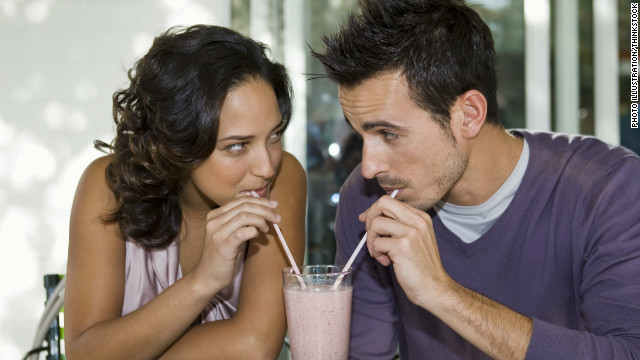Story highlights
- A man's stress levels may play a key role in whether his testosterone is free to work its magic on women
- The men with the strongest immune systems got higher markers on looks
- A stronger immune system was also linked to higher testosterone levels
Scientists have been trying to confirm what Hollywood has known for decades: Women are often attracted to men with chiseled cheekbones and lantern jaws.
These and other masculine facial features are associated with high testosterone levels, and women seem to know this fact intuitively. Studies suggest that women are especially drawn to rugged-looking guys when they're in the mood to mate (i.e., when they're ovulating), while at other times, when they're more interested in companionship, they tend to prefer a softer, more delicate lookŌĆöthink Ryan Gosling versus Burt Lancaster.
It's not entirely clear why testosterone-fuelled features are attractive, but some experts have proposed that they're a sign of a healthy immune system. Testosterone dampens immune function, so a man with high testosterone who's still standing, the theory goes, is likely to have a stronger-than-average constitution. And he'll pass those hardy genes on to his offspring, making him an attractive mate choice.
A new study, published this week in the journal Nature Communications, provides the strongest evidence yet to support this theory. It also adds a new wrinkle: stress.
In the study, men with higher testosterone levels tended to have stronger immune systems and faces that were more attractive to women. This relationship, however, was especially pronounced in men with low levels of cortisol, a stress hormone involved in the so-called fight-or-flight response.
This finding, researchers say, suggests that a man's stress levels may play a key role in whether his testosterone is free to work its magic on women. Cortisol may even have a direct impact on a man's facial features, although it's much too soon to say if that's the case or not, says Benedict Jones, Ph.D., a psychologist at the University of Aberdeen, in Scotland, who researches the influence of hormones on attractiveness.
"The important thing here is that...we're seeing evidence that the relationship between men's facial attractiveness and their hormone levels is probably much more complex than we once thought it was," says Jones, who was not involved in the new study. "The interplay between cortisol and testosterone seems to be more important than the effects of any one hormone."
Why is testosterone so sexy and cortisol, apparently, such a turnoff? The answer may lie in something called the "handicap hypothesis."
Biologists who study mate choice across species have suggested that attention-getting male featuresŌĆösuch as the peacock's tail, or the deer's antlersŌĆöare attractive to females because they're largely useless and impractical. They're often a disadvantage in areas of life besides attracting a mate, but they signal to females that a male is healthy enough to divert some energy away from surviving and put it towards looking good.
"The very fact that you're able to stay alive with this handicap means that the female choosing you is getting a high-quality mate," says Anthony Little, Ph.D., a research fellow at the University of Stirling, in the United Kingdom, who did not participate in the new research but has studied how human faces communicate information.
Rugged features aren't exactly seen as a handicap in humans, but a similar dynamic nevertheless may be at work, Little says. "Humans don't have colorful feathers, but we pay lots of attention to things like facial appearance and body appearance."
The handicap hypothesis has been around since 1975, but the new study is the first to provide concrete evidence for a link between high testosterone levels, good immune system function, and attractiveness in humans.
In the study, researchers asked a large group of female college students in Latvia to look at photographs of 74 male students and rate their facial attractiveness. Meanwhile, the researchers tested the men's testosterone and cortisol levels and gauged their immune-system function by measuring their antibody response to the hepatitis B vaccine.
The men with the strongest immune systemsŌĆöthose with the most antibodiesŌĆögenerally got the highest marks on looks. "Women seem to be able to detect the men who've got the strongest immune response, and they seem to find them the most attractive," says study coauthor Fhionna R. Moore, Ph.D., a psychology lecturer of Abertay University in Dundee, Scotland.
A stronger immune system was also linked to higher testosterone levels, but all of these links were weaker in men who also had high cortisol levels. It's as though cortisol, which tends to suppress the immune system, interferes in the conversation between testosterone, immune response, and attractiveness.
Cortisol isn't a perfect marker for stress, Little notes. It's not clear from one test, for instance, whether high cortisol levels are due to a momentary spike in stress or to chronic stress that keeps cortisol persistently elevated.
Still, he says, the fact that cortisol appears to come between testosterone and facial attractiveness suggests there's something about stress that women find unattractive.
Once again, Hollywood seems to have beaten science to the punch: It's no secret that there's something attractive about a man who seems relaxed and cool under pressure.




